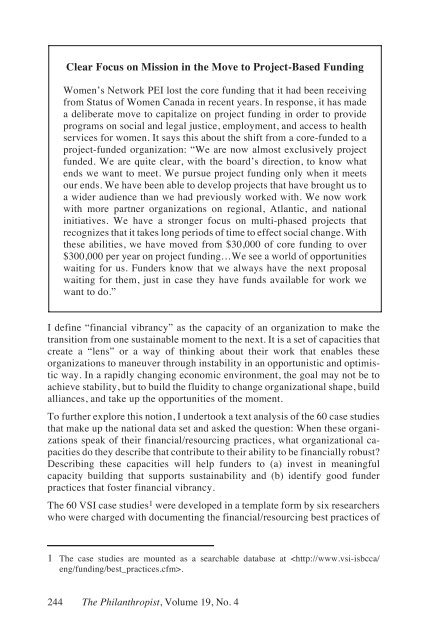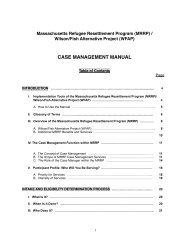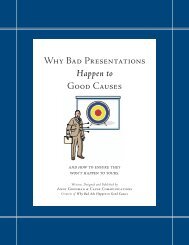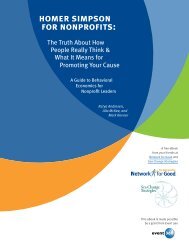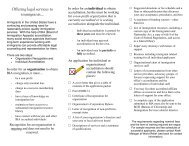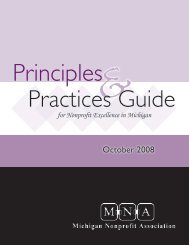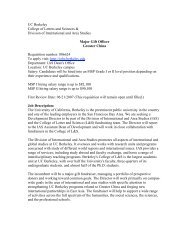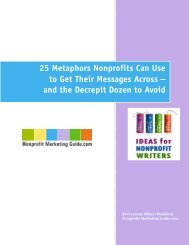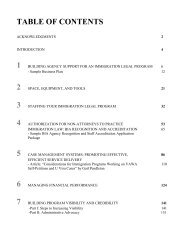Print this article - The Philanthropist
Print this article - The Philanthropist
Print this article - The Philanthropist
You also want an ePaper? Increase the reach of your titles
YUMPU automatically turns print PDFs into web optimized ePapers that Google loves.
Clear Focus on Mission in the Move to Project-Based Funding<br />
Women’s Network PEI lost the core funding that it had been receiving<br />
from Status of Women Canada in recent years. In response, it has made<br />
adeliberatemovetocapitalizeonprojectfundinginordertoprovide<br />
programs on social and legal justice, employment, and access to health<br />
services for women. It says <strong>this</strong> about the shift from a core-funded to a<br />
project-funded organization: “We are now almost exclusively project<br />
funded. We are quite clear, with the board’s direction, to know what<br />
ends we want to meet. We pursue project funding only when it meets<br />
our ends. We have been able to develop projects that have brought us to<br />
awideraudiencethanwehadpreviouslyworkedwith.Wenowwork<br />
with more partner organizations on regional, Atlantic, and national<br />
initiatives. We have a stronger focus on multi-phased projects that<br />
recognizes that it takes long periods of time to effect social change. With<br />
these abilities, we have moved from $30,000 of core funding to over<br />
$300,000 per year on project funding…We see a world of opportunities<br />
waiting for us. Funders know that we always have the next proposal<br />
waiting for them, just in case they have funds available for work we<br />
want to do.”<br />
Idefine“financialvibrancy”asthecapacityofanorganizationtomakethe<br />
transition from one sustainable moment to the next. It is a set of capacities that<br />
create a “lens” or a way of thinking about their work that enables these<br />
organizations to maneuver through instability in an opportunistic and optimistic<br />
way. In a rapidly changing economic environment, the goal may not be to<br />
achieve stability, but to build the fluidity to change organizational shape, build<br />
alliances, and take up the opportunities of the moment.<br />
To further explore <strong>this</strong> notion, I undertook a text analysis of the 60 case studies<br />
that make up the national data set and asked the question: When these organizations<br />
speak of their financial/resourcing practices, what organizational capacities<br />
do they describe that contribute to their ability to be financially robust?<br />
Describing these capacities will help funders to (a) invest in meaningful<br />
capacity building that supports sustainability and (b) identify good funder<br />
practices that foster financial vibrancy.<br />
<strong>The</strong> 60 VSI case studies 1 were developed in a template form by six researchers<br />
who were charged with documenting the financial/resourcing best practices of<br />
1 <strong>The</strong> case studies are mounted as a searchable database at .<br />
244 <strong>The</strong> <strong>Philanthropist</strong>, Volume 19, No. 4


